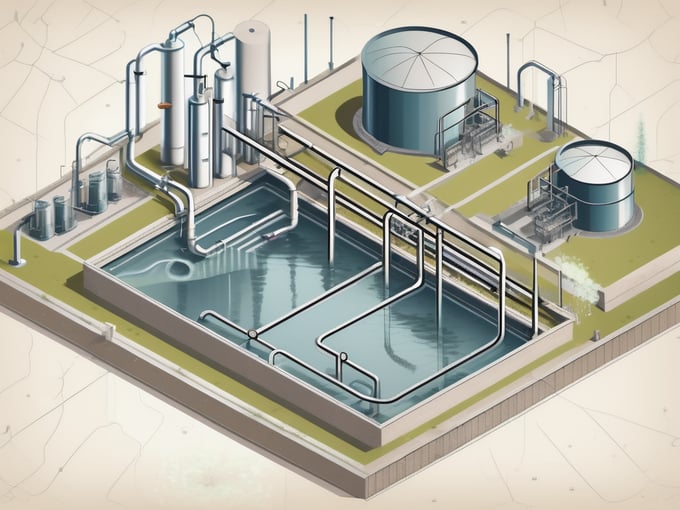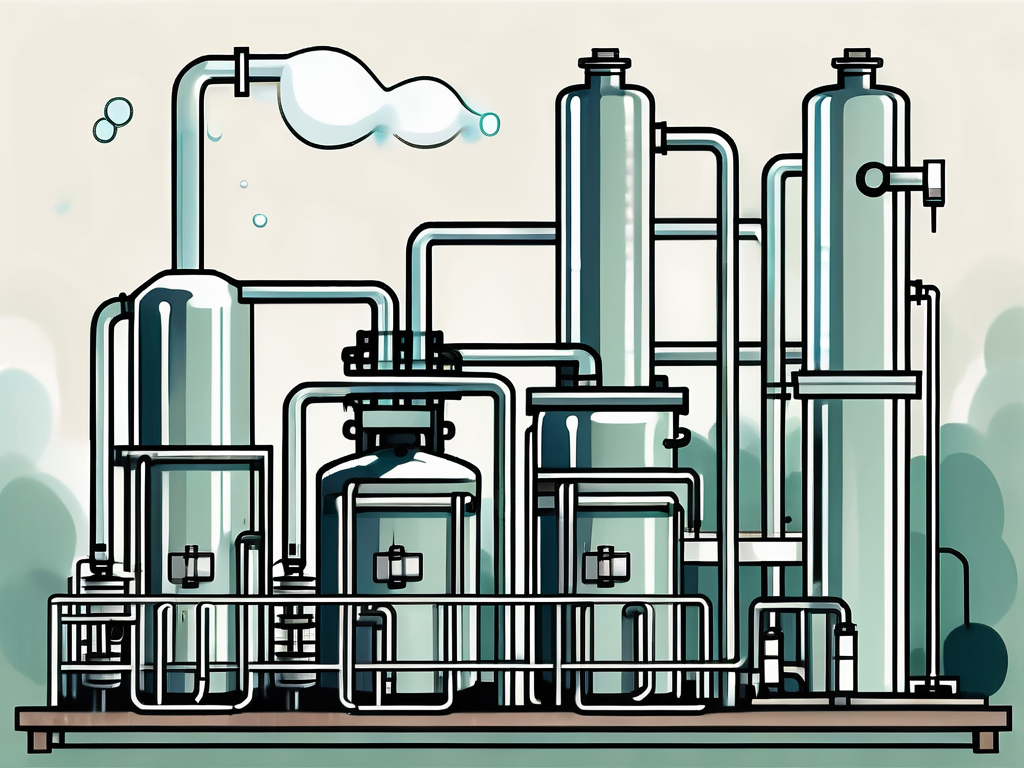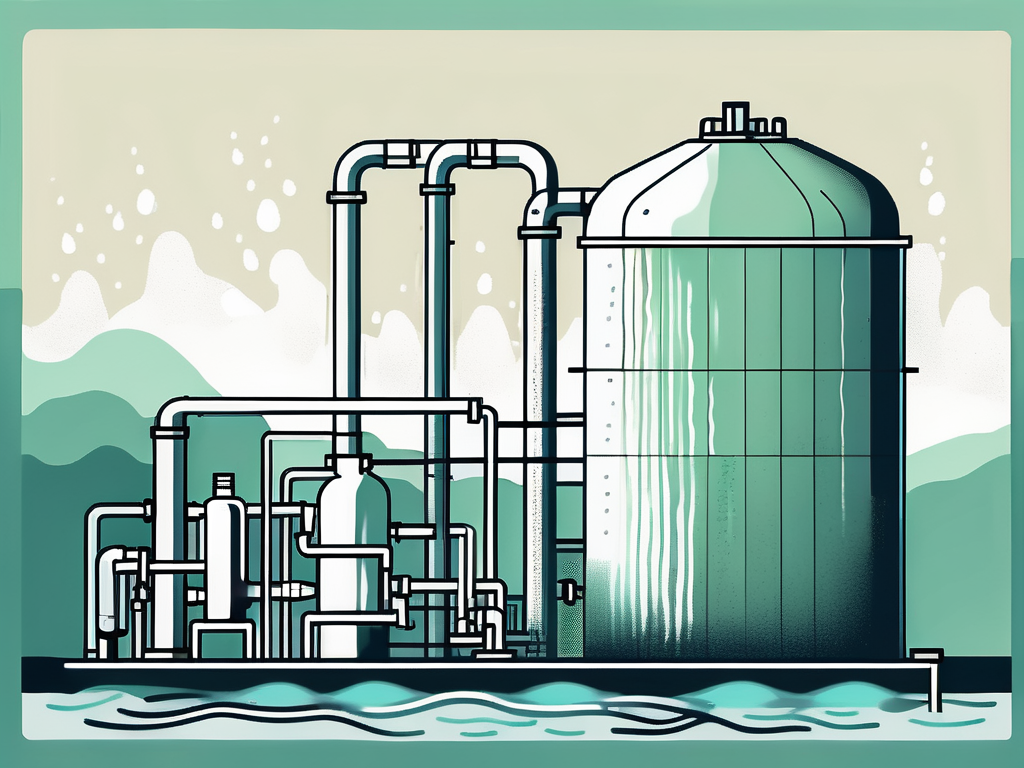
Chemical Precipitation: Wastewater Treatment Explained
Chemical precipitation is a critical process in the treatment of wastewater. This process involves the addition of chemicals to wastewater to facilitate the removal of pollutants. The pollutants, once combined with the chemicals, form precipitates that can be easily separated from the water. This method is widely used in wastewater treatment plants across the globe due to its efficiency and cost-effectiveness.
The process of chemical precipitation is a complex one, involving various stages and a range of chemicals. It is a process that requires a deep understanding of chemistry and environmental science. This article aims to provide a comprehensive understanding of the process, its applications, and its importance in the field of wastewater treatment.
Understanding the Process of Chemical Precipitation
Chemical precipitation is a physical-chemical process that involves the transformation of dissolved substances into solid particles. This transformation is achieved by altering the physical and chemical conditions of the solution. The process begins with the addition of a precipitating agent, which reacts with the dissolved substances to form insoluble precipitates.
The precipitates formed are larger and heavier than the dissolved substances, allowing them to settle at the bottom of the treatment tank. The settled precipitates, known as sludge, are then separated from the treated water. The treated water can then be discharged into the environment or further treated, depending on the level of treatment required.
Chemicals Used in the Process
The choice of chemicals used in the process of chemical precipitation is crucial. The chemicals must be able to react with the pollutants in the wastewater to form insoluble precipitates. Commonly used chemicals include aluminum sulfate, ferric chloride, and lime. The choice of chemical depends on the nature of the pollutants and the specific requirements of the treatment process.
Aluminum sulfate, also known as alum, is commonly used for the removal of phosphates and other suspended solids. Ferric chloride is effective in removing heavy metals and other inorganic pollutants. Lime, on the other hand, is used for the removal of hardness and the adjustment of pH. The use of these chemicals is governed by various regulations to ensure the safety and effectiveness of the treatment process.
Stages of the Process
The process of chemical precipitation involves several stages. The first stage is the addition of the precipitating agent. This is followed by rapid mixing to ensure the uniform distribution of the chemical. The next stage is flocculation, where gentle mixing allows the formation of larger flocs from the precipitates.
The flocs then settle at the bottom of the tank in the sedimentation stage. The settled sludge is then removed and treated separately. The treated water is then discharged or further treated. Each stage of the process is carefully controlled to ensure the effective removal of pollutants.
Applications of Chemical Precipitation in Wastewater Treatment
Chemical precipitation is widely used in the treatment of wastewater. Its applications range from the treatment of industrial wastewater to the treatment of municipal wastewater. The process is effective in the removal of a wide range of pollutants, making it a versatile treatment method.

In industrial wastewater treatment, chemical precipitation is used for the removal of heavy metals, phosphates, and other inorganic pollutants. The process is also used in the treatment of municipal wastewater for the removal of suspended solids, organic matter, and nutrients. The versatility of the process makes it a valuable tool in the field of wastewater treatment.
Removal of Heavy Metals
Heavy metals are a major concern in industrial wastewater. These metals, which include lead, mercury, and cadmium, are toxic and can cause serious environmental and health problems. Chemical precipitation is a highly effective method for the removal of heavy metals. The metals react with the precipitating agents to form insoluble precipitates, which can be easily separated from the water.
The effectiveness of the process in removing heavy metals depends on various factors, including the nature of the metal, the pH of the water, and the type of precipitating agent used. The process is often combined with other treatment methods to achieve the desired level of treatment.
Removal of Phosphates and Other Nutrients
Phosphates and other nutrients are common pollutants in municipal wastewater. These nutrients can cause eutrophication, a process that leads to the excessive growth of algae and other aquatic plants. Chemical precipitation is effective in the removal of these nutrients.
The process involves the addition of a precipitating agent that reacts with the nutrients to form insoluble precipitates. The precipitates are then separated from the water, resulting in the removal of the nutrients. The process is often used in conjunction with biological treatment methods to achieve a high level of nutrient removal.
Advantages and Disadvantages of Chemical Precipitation
Chemical precipitation offers several advantages in the treatment of wastewater. The process is simple and cost-effective, making it a popular choice for wastewater treatment. It is also versatile, capable of removing a wide range of pollutants. Furthermore, the process is scalable, making it suitable for both small and large-scale treatment plants.
However, the process also has its disadvantages. The use of chemicals can lead to the production of large amounts of sludge, which requires further treatment. The process is also sensitive to changes in the characteristics of the wastewater, requiring careful monitoring and control. Despite these challenges, chemical precipitation remains a vital tool in the treatment of wastewater.
Advantages of Chemical Precipitation
The primary advantage of chemical precipitation is its simplicity. The process involves the addition of a precipitating agent, followed by mixing and sedimentation. This simplicity makes the process easy to implement and operate. The process is also cost-effective, requiring relatively low capital and operational costs.
Another advantage of chemical precipitation is its versatility. The process can be used for the removal of a wide range of pollutants, including heavy metals, phosphates, and suspended solids. This versatility makes the process suitable for a wide range of wastewater treatment applications. Furthermore, the process is scalable, making it suitable for both small and large-scale treatment plants.
Disadvantages of Chemical Precipitation
The main disadvantage of chemical precipitation is the production of sludge. The precipitates formed during the process settle at the bottom of the tank, forming a sludge that requires further treatment. The treatment of this sludge can be challenging and costly, adding to the overall cost of the treatment process.
Another disadvantage of chemical precipitation is its sensitivity to changes in the characteristics of the wastewater. Changes in the pH, temperature, or concentration of pollutants can affect the effectiveness of the process. This requires careful monitoring and control of the process conditions. Despite these challenges, chemical precipitation remains a vital tool in the treatment of wastewater.
Future of Chemical Precipitation in Wastewater Treatment
The future of chemical precipitation in wastewater treatment looks promising. With advances in technology and a growing understanding of the process, it is likely that the process will continue to play a vital role in wastewater treatment. Researchers are exploring ways to improve the efficiency of the process and reduce its environmental impact.
One area of research is the development of new precipitating agents. These agents are designed to be more effective and less harmful to the environment. Another area of research is the optimization of the process conditions to improve the removal of pollutants. With these advances, the future of chemical precipitation in wastewater treatment looks bright.
Advancements in Precipitating Agents
Researchers are exploring the use of new precipitating agents in the process of chemical precipitation. These agents are designed to be more effective in the removal of pollutants and less harmful to the environment. Some of these agents include organic polymers and bio-based materials.
Organic polymers, for example, have been found to be effective in the removal of heavy metals from wastewater. These polymers form strong bonds with the metals, resulting in the formation of insoluble precipitates. Bio-based materials, on the other hand, offer a sustainable alternative to traditional precipitating agents. These materials are derived from renewable resources and are biodegradable, reducing their environmental impact.
Optimization of Process Conditions
Another area of research is the optimization of the process conditions in chemical precipitation. By optimizing the pH, temperature, and other conditions, researchers hope to improve the efficiency of the process. This optimization can lead to the removal of more pollutants and the production of less sludge.
For example, researchers have found that the removal of heavy metals can be improved by adjusting the pH of the wastewater. By optimizing the pH, the metals are more likely to react with the precipitating agent, resulting in the formation of insoluble precipitates. Similarly, the temperature of the wastewater can affect the rate of reaction and the size of the precipitates, influencing the efficiency of the process.
Conclusion
Chemical precipitation is a vital process in the treatment of wastewater. It offers a simple, cost-effective, and versatile method for the removal of a wide range of pollutants. Despite its challenges, the process continues to play a crucial role in wastewater treatment.

The future of chemical precipitation looks promising, with advances in technology and a growing understanding of the process. With the development of new precipitating agents and the optimization of process conditions, the process is likely to become even more effective in the future. As we continue to face the challenge of wastewater treatment, chemical precipitation will remain a vital tool in our arsenal.



